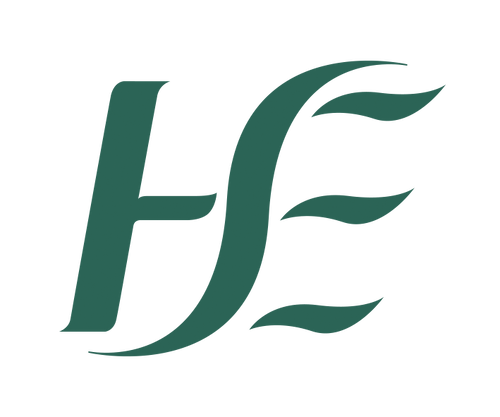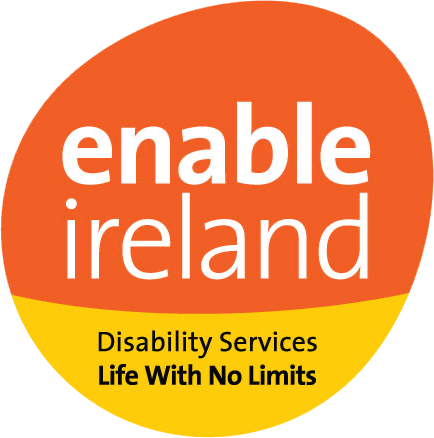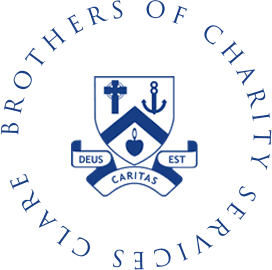Resources
Children and Young People’s Services Committees (CYPSC)
Children and Young People’s Services Committees (CYPSC) are a key structure identified by Government to plan and co-ordinate services for children and young people in every county in Ireland. The overall purpose is to improve outcomes for children and young people through local and national interagency working.
CYPSC is a very valuable resource for sign posting to various community organisations, resources and events.
CWKK CYPSC Newsletter 31/10/2024
HSE - Key National Documents
https://www.hse.ie/eng/services/list/4/disability/progressing-disability/pds-programme/documents/
There are a number of documents developed at national level as part of Progressing Disability Services for Children and Young People.
National Council for Special Education (NCSE)
The National Council for Special Education (NCSE) was set up to improve the delivery of education services to persons with special educational needs arising from disabilities with particular emphasis on children.
Irish Association of Speech and Language Therapists
The Irish Association of Speech and Language Therapists (IASLT) is the national, professional association representing Speech and Language Therapists in Ireland.
Irish Association of Occupational Therapists of Ireland
The Association of Occupational Therapists of Ireland (AOTI) is the professional body serving, promoting and representing occupational therapists in the Republic of Ireland and are the voice for the Occupational Therapy profession.
Irish Society of Chartered Physiotherapists
The Irish Society of Chartered Physiotherapists is the national, professional body representing over 3,000 Chartered Physiotherapists in Ireland. The Society is respected and recognised both within and outside the profession, as the voice of physiotherapy in Ireland.
Irish Association of Social Workers
The Irish Association of Social Workers is the national professional body for social workers in the Republic of Ireland.
City County Childcare Committees
City/County Childcare Committees support and assist families and early learning and care and school age childcare providers with childcare matters at local county level. They are a Department of Children, Equality, Disability, Integration & Youth-funded support and are located nationwide.
Assistive technology grant for students with disabilities
Assistive technology helps students with a disability who have difficulty communicating through speech and writing to fully participate in education.
Some examples of assistive technology include laptops or tablets with modified software, joysticks, keyboards, touch pads, tapes, braille equipment and audiology equipment.
Schools can get an Assistive Technology Grant from the Department of Education to buy computers and specialist equipment for students with a disability.
The Psychological Society of Ireland
https://www.psychologicalsociety.ie/
The Psychological Society of Ireland (PSI), Cumann Síceolaithe Éireann, is the learned and professional body for psychology and psychologists in the Republic of Ireland.
Respite Services
Respite services within the CHO5 area are provided by:
- Wexford: Ard Aoibhinn, Wexford and St Aidan’s Gorey, Co Wexford, Collective Sensory Group and Active Connections.
- Waterford: Waterford Intellectual Disability Association (WIDA), Active Connections.
- Carlow/Kilkenny: Enable Ireland, Kilcar House, Tullow, Co Carlow, Enable Ireland and Active Connections.
- South Tipperary: St Rita’s respite service with Brothers of Charity Services South East (BOCSSE) and Northfields respite service with RK respite, Collective Sensory Group and Active Connections.
Special Schools
Examples of Special schools within the CHO5 area include the below, this list is not exhaustive. Please see the National Council for Special Education website for more information on special schools, special classes, visiting teachers and the Special Educational Needs Organiser (SENO).
- St Joseph’s Special School
Parnell Street, Waterford. X91 E030. (051-876530)
https://www.stjosephsspecialschool.ie/ - St Martin’s Special School
St John’s Villas, Ballytruckle, Waterford. X91 WPC0. (051-876741)
https://stmartinssps.scoilnet.ie/blog/ - Sacred Heart Centre
6 Lady Lane, Waterford. X91 KA43. (051-877707)
https://www.touchinghearts.ie/about/ - St Patrick’s Special School
Drumgoold, Enniscorthy, Co Wexford. Y21 Y9W0. (053-9239150)
https://www.stpatricksschool.ie/ - Scoil Aonghusa
Cahir Road, Spafield, Cashel, Co Tipperary. E25 HY45. (062-62644)
https://www.scoilaonghusa.ie/ - St Patricks Special School
St Patrick’s Centre, Kells Road Kilkenny. R95 KW26. (056-7722934)
https://www.stpatrickskk.scoilnet.ie - St Laserian’s School
Dublin Road, Carlow. R93 N704 (059-9142601)
https://www.stlaserians.ie
Pre Schools
- Tús Maith Special Needs Pre-School
Newtown, Solohead, Tipperary, Co. Tipperary
- Lus na Gréine
Brothers of Charity, Fethard Road, Clonmel, Co. Tipperary E91 XY63
(052) 617 0554 - Holy Angels Day Care Centre
Strawhall Industrial Estate, Carlow, County Carlow.
(059) 914 3911 - Touching Hearts
C/O The Sacred Heart Centre, Lady Lane, Waterford.
(085) 163 5572 - Sesame Early Years Specialist Day Service
Whitestrand, Abbeyside, Dungarvan, Waterford.
(058) 40001 - Cunamh Mhuire Preschool
C/O Cumas New Ross, Butlersland Industrial Estate, New Ross, Co. Wexford, Ireland.
(051) 448063 - St. Aidans Day Care Centre CLG
Millands, Gorey, Co. Wexford, Y25 C9C5
(053) 942 1092 - Enable Ireland
O’Neill Centre, St. Joseph’s Road, Kilkenny
(056) 7762326
What is Lámh
Lámh is the manual, or ‘key word’ sign system used by children and adults with intellectual disability and communication needs in Ireland.
Some people use Lámh as their main way of communicating. Others use Lámh along with other methods of communication (for example, speech, sounds, sign, pictures, technology). This is known as the Total Communication Approach.
With Lámh, speech is always used with signs and only key words are signed. For example, with the questions, ‘will we go out to play?’, you might sign: ‘go’ and ‘play’ and ‘out’.
The benefits of using Lámh
- Using Lámh signs can reduce frustration, as the Lámh user is able to use signs to ask for what they want, to answer and to take part in conversation.
- The Lámh user may be more easily understood when they use signs and this encourages many to try new words and say more.
- Signing naturally encourages people to slow down a little so there is more time to work out the message.
- Signing encourages eye contact and attention to movement; skills that are important for supporting speech development.
- Signing gives a the child a visual clue (the sign) as well as the spoken word, which can support understanding.
- Signs emphasise small differences in the sounds of spoken words, for example, between ‘sleep’ and ‘sweet’, or ‘dog’ and ‘doll’.
- Signs can be easier to imitate. These attempts give an opportunity to match the spoken word to the sign.
- Early attempts at words are often unclear. If your child uses a sign as well, this will support their positive experience of communication with you.
- Using signs takes the focus off speech. The person who is not under pressure to talk may establish spoken language skills at their own pace.
How Lámh was developed?
Lámh was developed in Ireland in the early 1980s, to ensure we were using the same signs consistently across the country.
Lámh signs are based on or adapted from Irish Sign Language (ISL) and on natural gesture. ISL the first or preferred language of Ireland’s deaf community. Lámh and ISL are used differently. For example, with Lámh, speech is always used with the signs, finger spelling is rarely used, and only key words in a sentence are signed.
This close link with ISL, however, allows for Lámh users to move onto more complex ways of communicating if needed. For example, if they need a larger vocabulary, the transition to ISL can be more easily made. This is why manual sign systems from other countries are not used here, as they are based on the sign language of their own country, for example, Makaton is based on British Sign Language (BSL).
There are over 580 Lámh signs.
Further information and resources
Training in Lámh is about how to encourage and support your child as well as learning Lámh signs. Ask your CDNT about Little Lámh or the Lámh Family Course. Other options for accessing Lámh training can be found here.
There are lots of resources you can use to learn more about Lámh:
- Sign of the Week on Instagram @Lamhsign is a great place to start
- Jack and his Mum show us the benefit of using Lámh in a short video The Lámh Project on Youtube
- Little Lámh resource which is 26 online videos of Lámh signs
- Dizzy Deliveries TV Series with Lámh signs on the RTE Player has 26 episodes with themes of the zoo, school, visit to the doctor, the bakery, sports, and lots more
- Twitter, Facebook and Instagram @LámhSign, with more content on Youtube from Lámh and RTEJr
- Lámh-a-Song 1 & 2 children's songs with Lámh signs available by download on Vimeo https://vimeo.com/ondemand/lamhasong and https://vimeo.com/ondemand/lamhasong2
- Watch a short information video about Module One here
- Lámh Time App on Apple which includes 6 activities, 2 stories and a sign video library
- Posters: 'Out and About', 'Numbers', 'Colours', 'Sports', 'At the Hospital' at www.lamh.org
- Online video library of Lámh signs www.lamhsigns.org has been designed as a reminder and a support to those who have completed the Module One Lámh Course or Family Lámh Course.
Other Resources
Enable Ireland maintains a list of resources in the Kilkenny and Carlow area:
Resources for Parents in Kilkenny and Carlow
Enable Ireland maintains a nationwide resource hub:
National Council for Special Education maintains a list of useful apps:
Enable Ireland maintains a list of apps, games and toys for kids with disabilities:
Enable Ireland guide to accessible apps games and toys
The Central Remedial Clinic maintains a list of resources in the Waterford area:
Resources for Parents in Waterford
Waterford Family Forum Parent Talk on Introduction to Sensory Integration.
Parent session sensory processing
List of resources in the South Tipperary area:
Resources for Parents in South Tipperary
St Michael's House Sleep Kit - This resource is for anyone who would like to learn more about how to improve their sleep, or the sleep of someone they care for.



